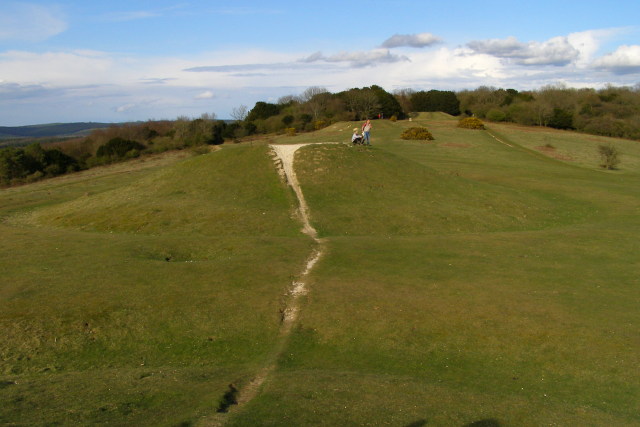23 June 2013
Reading the Landscape: Name that Tumulus
26 06, 13 Filed in: Countryfile | Reading the Landscape

Above: A bowl barrow on the ridge on Matley Heath, near Ashurst in the New Forest, Hampshire. Image: © Jim Champion | CC BY SA 2.0
With up to 20,000 burial mounds in Britain and ‘tumulus’ a common word on Ordnance Survey maps, it’s not surprising that wherever you go, a barrow, howe, hump, or tump is never far away; of all the ripples and bumps on the land, barrows are the most abundant hummock of all.
They might be ubiquitous, but they’re far from uniform, occurring in a wide variety of shapes influenced by geology, the materials that were available and the shifting cultural trends of 4500 years. In some places, these different species of barrows occur as swarms around other features – especially henges (there are around 300 barrows in the immediate vicinity of Stonehenge alone) while others appear to have a relationship to parish borders – vestiges of Saxon estate boundaries which may, in turn, follow older territorial lines.
The most basic – and common – form of tumulus is the upturned dish shape of the bowl barrow (above), a burial mound that has adopted a consistent form throughout prehistory from the Neolithic on, even re-appearing in 6th century Saxon England as chieftains’ tombs. A simple barrow with a pleasingly rotund, roughly circular mound, usually surrounded by a ditch and an external bank, bowl barrows were built all over Britain, and most are between 5 and 40m across and up to 4m high.

The mounds of bell barrows (above) from the early Bronze Age on are separated from the ditch and bank that surrounds them by a narrow, level platform, or berm. They are most frequently associated with male burials and often contain daggers and other weapons among the grave goods. The ditch and platform can encompass up to four separate mounds, as can the ditch and bank of its refinement – the disc barrow (below) – which features a much smaller mound and wider platform.

While bell and disc forms are usually the graves of Bronze Age men, saucer barrows are predominately the tombs of women and can be recognized by a low, wide mound which extends without a berm to the ditch. Of the 60 in Britain, most are in Wessex, of the handful in Sussex, the best is at Chanctonbury Ring.
Of all the burial mounds, long barrows (below) are the oldest. There are around 300 of them in England and Scotland and a handful in Wales, all dating to the early Neolithic, contemporaries of the cromlechs and quoits of upland Britain. As the name suggests they are long – up to 125m – and they are usually the site of multiple interments. Their physical dominance of the landscape, and elaborate construction – some, like Belas Knap, Gloucestershire even have false entrances – inspired legends about their origin, the Wayland Smithy on the Berkshire Downs is a good example.

Comments
